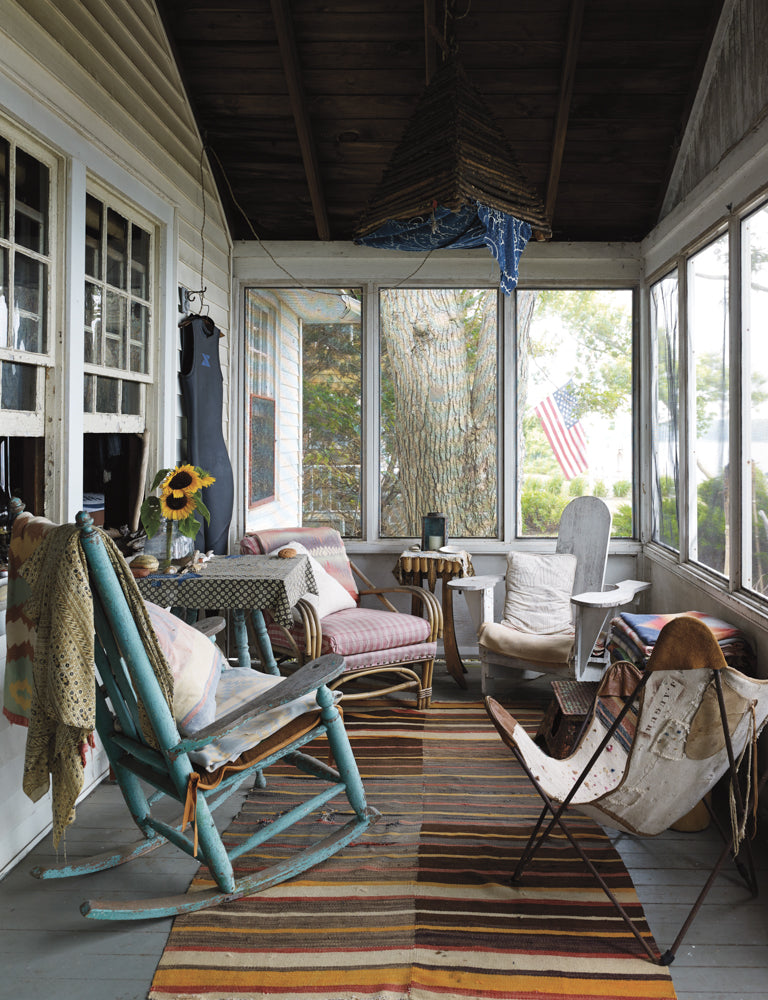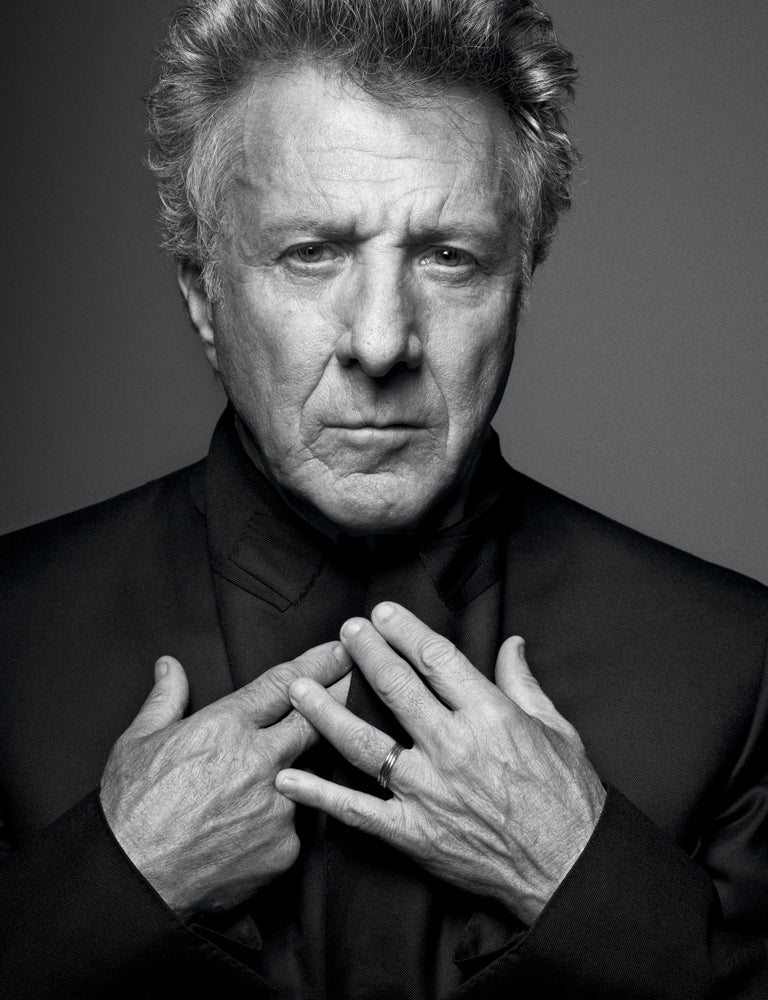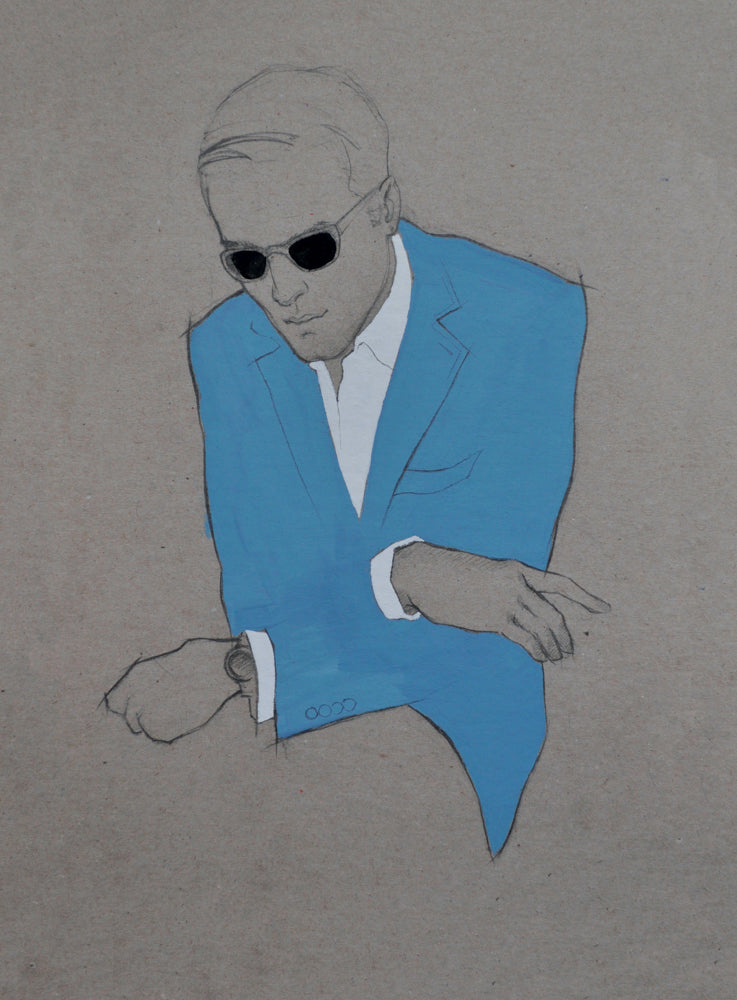
Doug Bihlmaier’s Lost Cabin
DOUG BIHLMAIER’S LOST CABIN


“It was a fishing camp from the early 1900s. When I first got it, it had no heat, no insulation and the roof leaked. I had to sleep with pots on the bed to catch the rain.”
Doug “Billy” Bihlmaier is the Johnny Appleseed of vintage — the guy who brought the past into the present. If you’re making a living in menswear these days, you probably owe him a six-pack. As you might imagine, the street style bloggers can’t get enough of his tastefully disheveled style, which he’s shared with the world through his work with Ralph Lauren.
Perched on a stool at his office in Soho, with his white beard and bald pate, he looks like a beatnik Yogi. His desk is meticulously decorated with perfectly patina-ed knickknacks, and a Native American blanket sits folded on a chair. Half-a-dozen perfect motorcycle jackets hang on a rack that’s been parked by the door.


As we’re speaking, a store managers pops in to relay a message about The Boss. The other boss. “Bruce [Springsteen] usually orders 14 jackets at the beginning of every new year,” the manager says, as Bihlmaier nods, matter-of-factly.
For years, the back half of RRL’s sprawling flagship was cordoned off from the rest of the store with thick curtains. Behind them, Billy was building one of the most comprehensive collections of vintage American clothing in the world.

“It was Ralph’s vision, definitely,” he says, referring to the RRL mandate of only buying “stuff that had character.”
“That’s obviously the hardest thing to duplicate,” he says. “To be honest, I never in a million years thought it would evolve the way it has. It just sounded like a fun thing to do.”
Now 60, Bihlmaier grew up in Osborne, Kansas, admiring the well-worn work clothes of his grandfathers, a rancher-farmer and carpenter, respectively. He got into the denim game early, in the late 1960s, while he was still in high school. Levi’s had switched from the capital ‘E’ to the small ‘e’, and started to lose its cool. A frustrated young Billy began looking around for older pairs that looked and fit the way he wanted them to.


During his freshman year at Kansas State, he took a job at Woody’s, a preppy retail shop that carried an up-and-coming line called Ralph Lauren. It spoke to him.
“When we first started carrying their stuff it was just ties and shirts,” he says. “It was just steps above what anyone else was doing.”
He took a job at the first freestanding Ralph Lauren store in Dallas in the late 70’s, before coming to New York to pursue his true passion: scouring the planet for garments whose wear reflects the nuances of another life.
Today, the vintage operation under Billy’s stewardship supplies 20 Ralph Lauren flagships across the US and an ever-growing number in Europe and Asia, in addition to RRL’s standalone stores.


Since the early 90’s, Team RRL has been buying through Doug’s network of flea-market treasure hunters. “I always tell my buyers, if you don’t want to own it, don’t buy it,” he says.
And no, he wouldn’t give me any names. “There’s a guy in California on belts and boots, another guy in California who does jackets, a couple guys in New Mexico for turquoise, a couple guys in Arizona for blankets, two or three people in London who do the British military and French work wear stuff. I’m always on the hunt.”
For more insight into Bihlmaier’s hugely influential aesthetic, Man of the World took a trip out to Springs in East Hampton to shoot the ramshackle retreat he’s been renting for the past few years.

“It was a fishing camp from the early 1900s, and when I first got it, it had no heat, no insulation, and the roof leaked,” he says. “I had to sleep with pots on the bed to catch the rain. I absolutely loved it.”
In a strange twist to this story, Billy’s cabin was torn down shortly after these photos were taken. Someone bought it from his landlord and bulldozed it to make space for their McMansion. But he’ll find another one. He always does.


